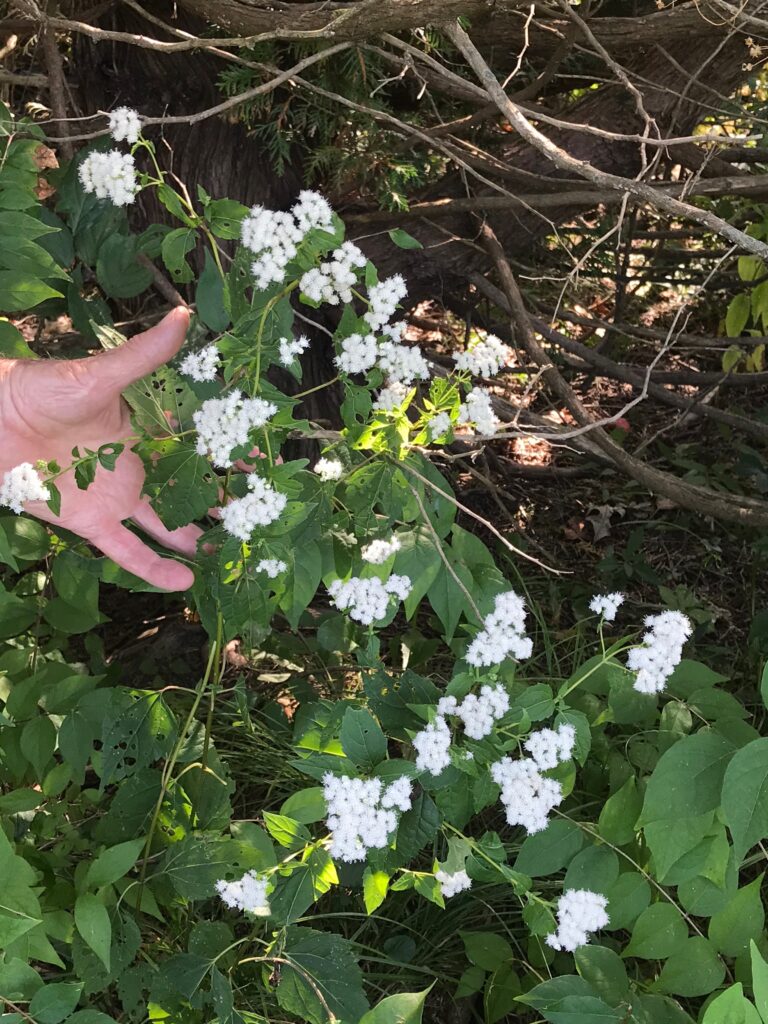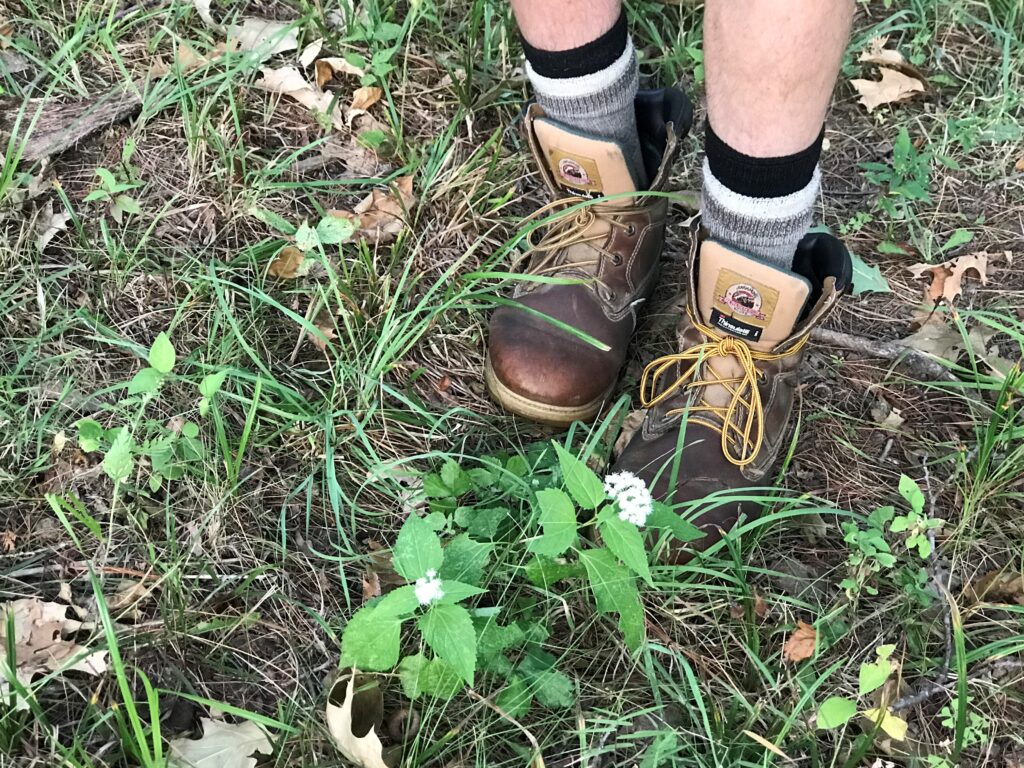Milk Sickness

A 2-foot tall specimen with white flowers, growing in moist soil in a valley bottom with morning shade. My hand for scale. Photos by Kate Sulentic.
As the calendar rolled over from the 1700s to the 1800s, pioneers from the Eastern Seaboard states were moving westward through the Appalachians where a disease that they rarely saw back east seemed to become more common and more deadly. It was called milk sickness because it seemed to affect people who had recently consumed milk, butter or cheese. But their neighbors who had also consumed these foods might not be affected, so it was not a very convincing correlation.
The nearby Native peoples never seemed to have the problem and there were assorted theories about natural immunity, but they also didn’t keep livestock. Sometimes the curse would become so virulent in an Appalachian valley that everyone would simply pack up and leave, abandoning the valley for a half-century or more.
As pioneering continued westward onto the foothills and flatlands of the Midwest, the disease “followed them.” Those who died were not rich or famous, so we know little about them today. Nancy Hawks Lincoln apparently died of it in 1818, near Little Pigeon Creek, Indiana, and her 9-year-old son Abraham carved the pegs to help his father assemble her coffin, so rather belatedly, her name came to be associated with the disease.
A few years later, Anna Bixby, a doctor in Illinois, noted that the disease seemed to be mainly a late summer curse, with cattle getting “the trembles” and people getting milk sickness. Thinking that both might be a grazing problem, she fed calves and cows plants that became prominent in late summer, overgrazed pastures and found the source of both problems to be a plant called white snakeroot. Doctors visited patients back then, and as Anna traveled around her area, she made it her personal campaign to advise everyone to either eliminate that plant from their pastures or move livestock to fields where it was absent. Within a decade or so, both the trembles and milk sickness had disappeared from her service area.
White snakeroot is a small plant in early summer and cattle avoid eating it. By late summer, all the more palatable plants in pioneer pastures had been eaten down. White snakeroot was up and flowering and became a more substantial part of their diet. Some cattle did not show symptoms, but eliminated the poison in their milk, which made them less vulnerable, but milk drinkers more vulnerable.
White snakeroot is usually a woodland plant that favors light shade. In ideal conditions with deep, rich woodland soil on moist lower slopes in light shade, the plant can be 4 or 5 feet tall. In late summer, it is easily noticed because the clusters of small, brilliant white flowers almost glow in shade and shadow. White snakeroot can be a persistent plant. When woodlands are cut down to create better pasture, the species will persist among the grasses for many years.

A very small specimen with white flowers on a dry south-facing hillslope under an oak canopy with sparse pasturage. My boots for scale.
Rural populations were fairly isolated two centuries ago and Dr. Bixby’s eradication/avoidance campaign did not spread far beyond her service areas. Milk sickness remained a Midwestern and Appalachian curse for another century. In their 1913 edition of An Illustrated Flora of the Northern United States and Canada, Britton and Brown describe white snakeroot in good detail but make no mention of milk sickness, suggesting that they were not aware of the correlation.
Only when the agricultural schools began to bring programs to state fairs, mail brochures, and generally help educate the rural populace about plant toxicity, was widespread progress made. Here in Iowa, Louis Pammel, professor of botany at Iowa State University, was an important leader in educating the public in the early 1900s, and milk sickness faded into the background by around 1925. The species is still with us, persisting across Iowa in woodlots and bushy pastures, partially because livestock prefer to not eat it.


